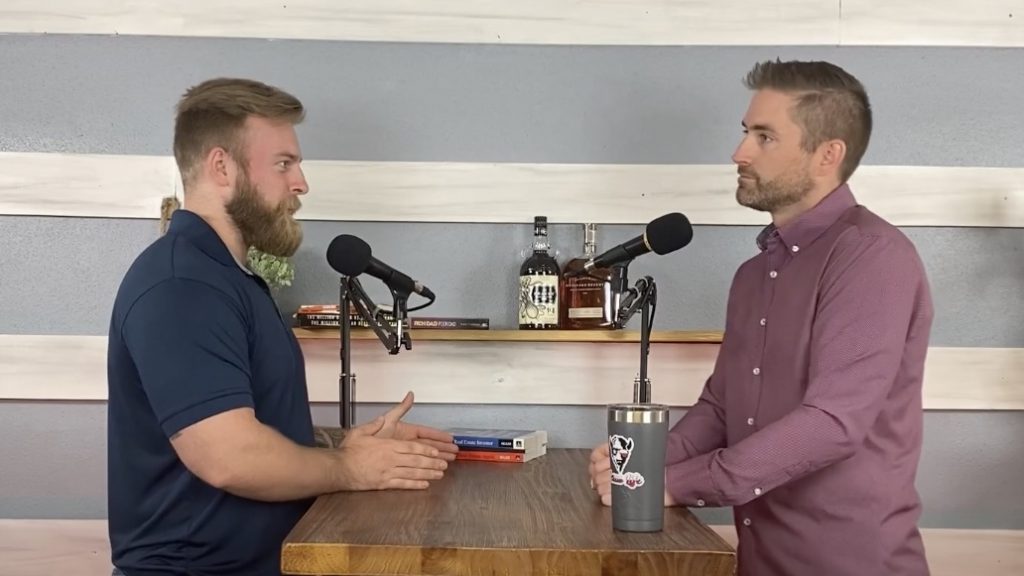It’s no secret that the housing market is incredibly competitive right now. Currently, we only have one month’s worth of inventory here in Dallas and Fort Worth. This means that if we were to stop listing houses on the market, we would run out in a month.
Not only are houses selling way over the asking price, but most houses will have at least 10 offers. We recently sold a house that had 21 offers. With this unprecedented level of competition, it is crucial to make a strong offer on any house you want to buy.
Today, we are going to tell you seven different things that you can do to make your offer as strong as possible.
Step 1: Secure Proper Financing
It’s no surprise that money is one of the most important parts of any offer. Money is one of the driving factors behind a seller’s decision, so you want to make sure that you offer a generous amount, especially right now. This is crucial for consideration, but it is not the only important part of the financing.
The type of financing you have is also incredibly important to a seller. Generally, there are four different types of financing that you can use to make an offer on a house: cash, conventional financing, FHA loans, and VA loans.
Paying in cash will almost always guarantee that a seller chooses your offer. If you can pay in cash, you should. Most people cannot afford to make a cash offer on a house. In this case, they will need some kind of financial backing. When a private institution backs the funding, it is called a conventional loan. These are very common and very trustworthy. Many sellers are perfectly happy with conventional financing. An FHA loan is a mortgage that is backed by the US Government that gives the buyer looser financial requirements than a conventional loan. VA loans are also backed by the US Government and are available for veterans.
Step 2: more option & earnest money
Earnest money is paid at contract and it goes towards your down payment. This payment basically tells the seller you are serious about buying the house. Typically, earnest money is around 1% of the sales price and it is nonrefundable. If you really want the house, you can make your offer more compelling by offering more earnest money.
The Option Period is a time when the buyer can have the house inspected to make sure there are no issues that they may have missed. In the past, it was standard for a buyer to pay $100-$200 for a week-long Option Period. In this market, if you pay more money and make the period shorter, the seller is more likely to choose your contract. Like earnest money, this money goes towards the down payment and cannot be refunded. Recently, I have seen up to $1000 put down as Option Money.
Step 3: Have an appraisal waiver
If you are financed by any kind of loan, whoever is funding the purchase will want to make sure that the investment is secure. To do this, they will request for an appraiser to be sent to the house to make an estimation of value based on specific criteria.
In the past, appraisals were often used against sellers. If the appraisal came back and it was under the asking price, the appraisal could be used as leverage and the buyers could ask the sellers to lower their price.
Right now, many buyers are putting some kind of appraisal waiver into the contract. If the buyer opts for a full appraisal waiver, they are saying that they will completely disregard the appraisal and pay the full price, even if the house is overpriced according to the appraisal. Some buyers will opt for a partial waiver and note that they are only willing to go a specific amount over the estimated price.
It should be noted that appraisers are working with the same information that agents are, so if you’re working with an agent, you should have a good idea of what the difference between the asking price and the appraisal price will be. This will help you determine whether or not to offer a full or partial appraisal waiver.
Whether it’s full or partial, an appraisal waiver is almost necessary to make a competitive offer right now.
Step 4: pay for the title policy
The title policy is insurance that protects the buyer from mistakes made by the house’s previous owners. Instead of holding the new owners financially responsible for mistakes made by the previous owners, the title policy ensures that insurance will take care of it.
Traditionally, this is something that the seller would pay for, but if you really want to make a competitive offer, you can elect to pay for it as a buyer. The title policy will generally cost just under 1% of the sales price, but this can vary some between price points. Paying for this is a simple way to make your offer more compelling for any seller.
This tip really only works when you’re buying a pre-owned house because if you’re buying a new house, the builder will always make you pay for it.
Step 5: pay for the survey
If you have any kind of financing, you are also going to need a survey. The survey is a document that says you are buying exactly what you say you are. It’s another form of protection for whoever is backing your funding.
Sometimes, the seller will have their survey from when they purchased the house. In this case, there is no need for anyone to pay for a new one. However, if the seller has occupied the house for 15-20 years, it is possible they may have lost it. In this situation, you can elect to pay for a new one.
Usually, the survey will cost around $500 for a typical neighborhood home. If you’re willing to pay for it, this is a great way to strengthen your offer.
Step 6: provide a flexible leaseback
In the past, buyers would occasionally offer leasebacks, but they were not very common. In this market, we are starting to see them more frequently because buyers are attempting to accommodate sellers more than ever.
When a leaseback is provided, the buyer purchases the house and becomes the rightful owner but gives the sellers a certain period of time before they have to be out of the house. The buyer is basically leasing the house back to the sellers after purchasing it.
We have been seeing a lot of buyers provide free leasebacks for a short period of time without the seller ever asking for one. This provides peace of mind for the sellers and helps reduce some of the stress that can come with moving out, especially if they are trying to coordinate moving into their new house.
There are different ways to make a leaseback more enticing for a seller, but just being flexible can make a big difference.
step 7: Forego the mineral rights
When you buy a house, you’re not actually buying a house. You’re technically buying the land that the house is on and the house comes with it. In Texas, when you buy that land, you automatically gain the mineral rights to that property. The mineral rights include any naturally occurring resource that is found on the property.
If you’re buying a lot in a neighborhood, the mineral rights will not provide some massive advantage for you. The odds are very slim that you find a gold mine under your quarter-acre lot. Because there isn’t much value in gaining the mineral rights to the property, many buyers will forego the mineral rights and allow the sellers to keep the rights to anything found on that property. It’s more of a nice gesture than anything else, but if you’re willing to throw that in there for the sellers, it can make your offer stronger.
If you’re buying a large piece of land, this tip may not apply. Depending on where you are and how many acres you’re buying, you may want to keep the mineral rights.
conclusion
These are the seven things that we would suggest if you want to make a competitive offer on a house. I can’t guarantee that your offer will be chosen 100% of the time, but they will certainly increase the chances that your offer is chosen. At the very least, they will keep your offer in the conversation for longer.
If you have any questions, want to know more, or would like to buy or sell a property, don’t hesitate to call the number on our website. We would love to help you out with all your real estate needs.
Follow us on social media to stay up to date with all of our content, including clips from our weekly podcast where we talk about everything real estate, investing, and Dallas-Fort Worth.


